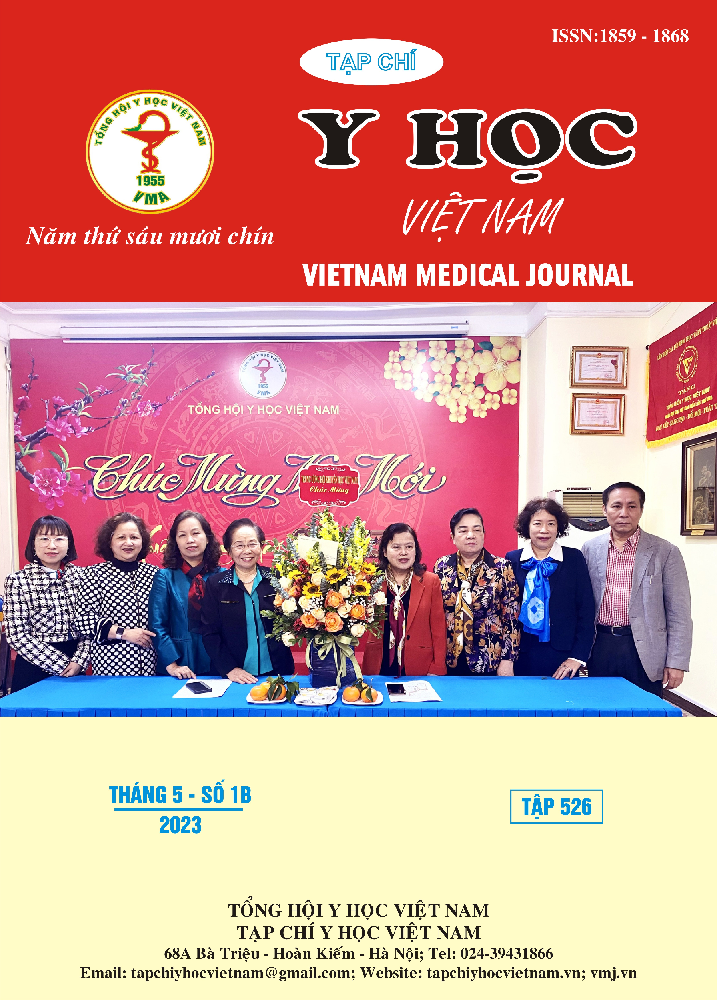A STUDY ON THE ACUTE TOXICITY AND SUB-CHRONIC TOXICITY OF GK1 CAPSULES ON EXPERIMENTAL ANIMALS
Main Article Content
Abstract
Objectivities: The study is to determine the acute toxicity and the sub-chronic toxicity of GK1 capsules on experimental animals. Methods: the acute toxicity of GK1 capsules was evaluated on Swiss mice by the Litchfield - Wilcoxon’s method and the sub-chronic toxicity was evaluated on Newzealand White rabbits according to Vietnam Health Ministry’s regulations and WHO guidelines on the effectiveness and safety of the medicine. Results: The LD50 of the GK1 capsules was not identified at the highest dose that mice could drink for 24 hours (50.0g/kg BW). The GK1 capsules at 15 g/kg per day and 45 g/kg per day for 60 consecutive days did not affect the body weight and the hematology indicators like red blood cells, white blood cells, platelets and hemoglobin content, the liver cell destruction assessment indicators (AST and ALT), and kidney functions (urea and creatinin); the changes were not statistical significance (p> 0.05) between the research group and control group. The pathological images of rabbits’ livers and kidneys were within the normal limits. Conclusions: The GK1 capsules did not have acute toxicity, did not change the functions of hematopoiesis, and did not destroy the liver cells, the kidney functions, the form of kidney, liver and spleen on experimental white rabbits.
Article Details
Keywords
GK1 capsules, acute toxicity, sub-chronic toxicity.
References
2. E. Yarnell (2012). Botanical Medicines Used for Kidney Disease in the United States. Iranian Journal of Kidney Diseases, 6(6).
3. Y. Zhong, Y. Deng, Y. Chen, P. Y. Chuang, and J. C. He (2013). Therapeutic use of traditional Chinese herbal medications for chronic kidney diseases. Kidney International, 6(84), 1108-1118.
4. Phạm Xuân Phong và Trần Thị Tuyết Nhung (2012). Đánh giá tác dụng bài thuốc "Bảo thận thang" thụt giữ đại tràng điều trị suy thận mạn giai đoạn I, II. Tạp chí Y học Việt Nam, 2, 125-128.
5. Phạm Xuân Phong (2015). Bước đầu đánh giá tác dụng của bài thuốc Bảo thận thang (T4) trên mô hình suy thận mạn, Y học Việt Nam, 435(1), 36-38.
6. Trịnh Khánh Linh, Trần Văn Cường, Hồ Anh Sơn (2019). Nghiên cứu tác dụng của dịch chiết cây Hạ khô thảo nam – Blumea lacera (Bur.f.) trên chuột bị gây suy thận mạn bởi adenin, Tạp chí Khoa học và Công nghệ Việt Nam, 20-24.
7. Đỗ Trung Đàm (2014). Phương pháp Litchfield Wilcoxon, Phương pháp xác định độc tính của thuốc, Nhà xuất bản Y học, 101 - 112.
8. Viện Dược liệu (2006). Phương pháp nghiên cứu tác dụng dược lý của thuốc từ dược thảo, Nhà xuất bản Khoa học và kỹ thuật, 355-376.
9. Bộ Y tế, Cục Khoa học công nghệ và đào tạo (2005). Quyết định về việc ban hành dược liệu chuyên môn, Hướng dẫn thử nghiệm tiền lâm sàng và lâm sàng thuốc đông y, thuốc từ dược liệu, số 141/QĐ-K2ĐT.
10. O. Alert (2005). Guidance for Industry Estimating the Maximum Safe Starting Dose in Initial Clinical Trials for Therapeutics in Adult Healthy Volunteers.


